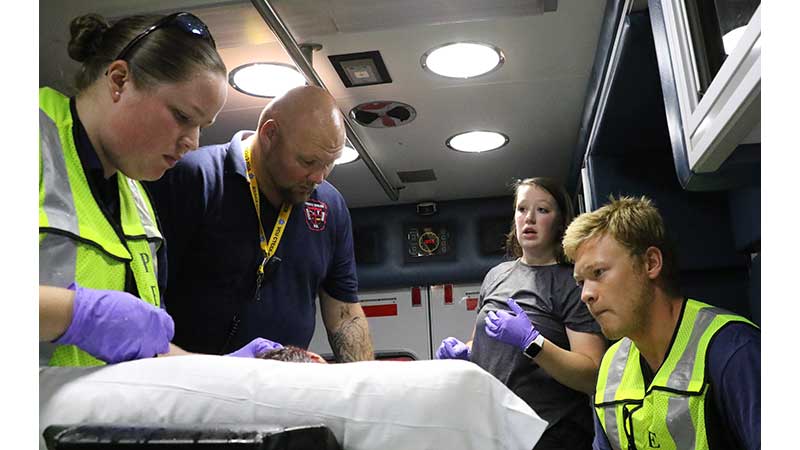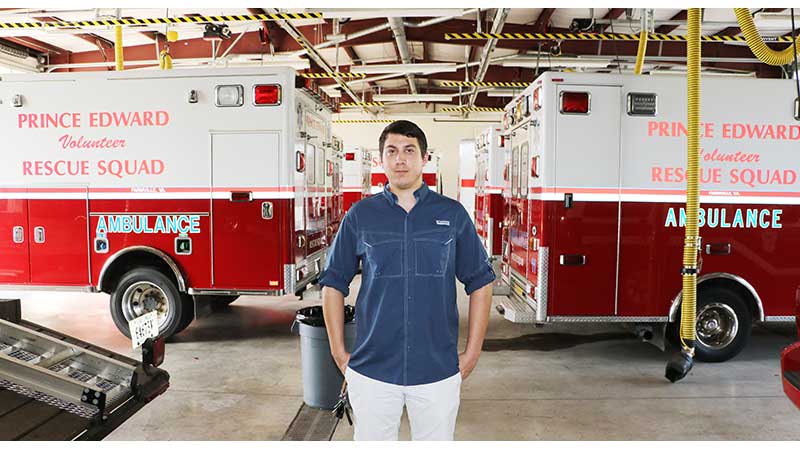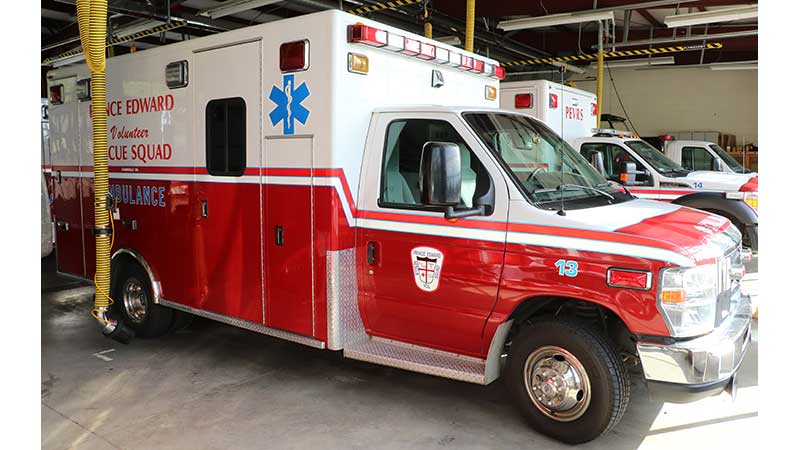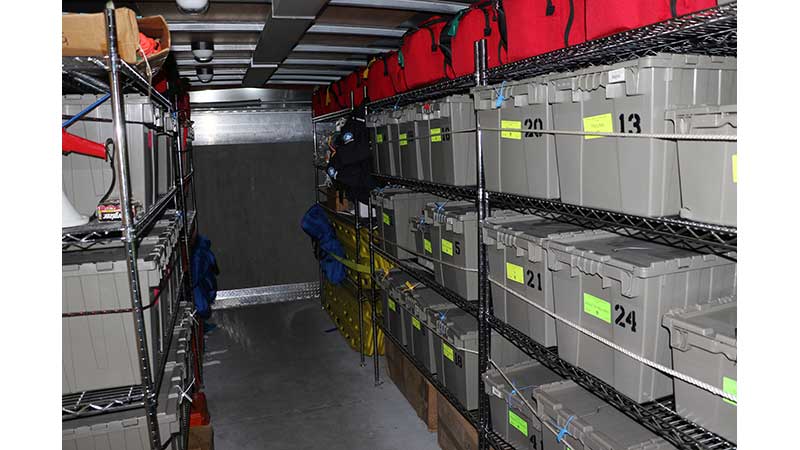The rescue squad perspective
Published 7:15 am Friday, August 9, 2019
The Prince Edward Volunteer Rescue Squad (PEVRS) has been at the center of discussions across the county within the past 12 months due its request for help with funding, and those discussions reached a new level of intensity last month when the Prince Edward County Board of Supervisors indicated that tax levies could be on the way to provide the help requested. This article will help shed light on the squad’s perspective with regard to its present situation and the potential tax increases.
The board voted July 9 to approve a motion authorizing the advertisement of two public hearings set for Tuesday, Aug. 13: One will concern establishing an Emergency Medical Service (EMS) District, which would encompass all of Prince Edward County; the other public hearing will concern establishing a tax levy for this EMS District of 1 cent for real estate and 10 cents for personal property, excluding merchants’ capital.
The revenue from the proposed tax increases would go solely to provide for emergency medical services.
PEVRS President David Norman shared how he would address those who might be unhappy about the tax levies, and he provided insight into why he believes these levies are important and needed.
“I would tell the community, and I’ll tell the same thing to the board or whoever on the 13th, that everything, in time, eventually costs more,” he said. “Paid providers, they expect a certain amount of money. They’re not going to work for $7 an hour or whatever the minimum rate is. But everybody pays taxes. It’s not that much more. Everybody has the ability to call 911 and receive services from (PEVRS) or any of the other EMS agencies in Prince Edward County. I personally have no issue with myself paying taxes because I could be a patient any time as well as anyone else. Because (if) God forbid someone go out and wreck on the way home, who are they going to call? They’re going to call 911. They’re going to want appropriate resources. They’re going to want the highest level of care.”
He noted that for a car valued at $20,000, the 10-cent personal property tax increase would translate to $20 more a year.
“I don’t know how people spend their money, but I guarantee if they smoke, they spend more than $20 a month in just cigarettes or if they buy lottery tickets or if they drink alcohol or even if they watch TV and they subscribe to a premier TV (channel) or Redbox or anything like that, all that adds up,” he said. “So to have life-saving equipment and personnel to take care of them is a small, phenomenal fee for the services that we provide, because we have around 18-20 paramedics, we have numerous EMT (Intermediates). We have a lot of very trained people that can take care of a wide variety of pretty much any medical condition, any trauma condition, behavioral issue.”
PEVRS Treasurer Carol Broadwater said that the squad currently features 35 volunteers, nine full-time paid employees and 11 part-time paid employees.
In addition to the squad providing emergency care, Norman noted that it also offers important training opportunities to the community.
Prior to participating in his interview with The Herald on a day in mid July, Norman noted that he “was teaching CPR to some local people. We offer that. We offer a lot of resources to a lot of people, and we love to do it. That’s why we’re here.”
Broadwater conducted a tour that day of the rescue squad’s facility, which is located at 500 Doswell St. in Farmville. It is a large building tucked inside a residential community.
“I feel like almost one of the sad things is that our building is tucked back here where nobody goes by it and sees it,” she said. “… And I keep telling the Board of Supervisors and the Town Council, ‘You need to come over here and just walk through and see what we have and what we’re capable of doing for the county and the town.’”
She started the tour in the squad’s garage, where all five of its ambulances were parked along with the rest of the fleet. The fleet includes Rescue 1, which looks like a fire truck.
“It’s used for any time we do extrication and scene lighting for fires,” Broadwater said, noting it is loaded with equipment and requires extensive training to drive it. “But it is very needed.”
Near Rescue 1 is a mass-casualty trailer that is stocked full of emergency equipment and supplies that must periodically be renewed.
Later on, PEVRS Captain Andrew Watters referenced the trailer and said, “God forbid we ever need it, but we have to keep it up and current.”
Broadwater also highlighted the other occupants of the garage: Medic 1, an SUV for use by paramedics; and a six-wheeler, good for navigating off-road terrain. Even the six-wheeler, she noted, requires training to be cleared to drive it.
“There’s lots and lots of training here at this agency for anything you do,” she said.
Continuing the tour, she presented a supply room and a conference room, and then she showcased how the building is — and must be — equipped for comfortable living. Some employees, even as the tour proceeded, were in the midst of 36-hour shifts.
Broadwater pointed out a women’s bunk room and accompanying bathroom and shower, noting it was neighbored by the same accommodations for men. There was also a living room, a workout room and a kitchen.
In addition to offices for different personnel, including Broadwater, Watters, Paid Staff Supervisor Adam Cliborne and the billing clerk, there are also public restrooms, a classroom and a whole side of the building that can be made available for others to use as well.
“This is the side that we allow folks to rent out — garden clubs, different places,” Broadwater said.
Following the tour, Watters provided insights into how the rescue squad is strained due to lack of funding. Watters is a volunteer with the squad and has helped out since 2011, when he began attending Hampden-Sydney College. He said he spends at least 20 hours a week at PEVRS now, helping oversee the agency.
He noted that the two biggest areas of need that added funds from the proposed tax increases could address would be the squad’s apparatus and its personnel. “Apparatus” refers to the squad’s fleet of vehicles.
“I can’t tell you I remember the last time we had all five (ambulances) running,” he said. “We have at least one down a week.”
He estimated that three quarters of the time the breakdown is mechanical.
“The other quarter of the time, it’s things with the boxes on the back,” he said. “The air conditioning units are going out, and we’re required by the state to have that, especially on days like today when it’s over a hundred degrees. It’s basically an oven in the back of those things without it.”
Sometimes the issue could be something as simple as a siren not working or the lack of a required tool, like a window punch, used to break windows.
“It’s just these little, tiny things that add up,” Watters said. “And if you’re missing the little things, then you’re kind of screwed in the long run.”
Watters said the Virginia Office of Emergency Medical Services, which falls under the Virginia Department of Health, can pull the license of ambulances for any of these infractions, and the office is able to do random inspections as well.
As for when ambulances should be replaced, Watters said it depends on the call volume, but ideally it is every 5-10 years. PEVRS has been getting 10 years out of its trucks.
The call volume in Prince Edward is going up every year. Last year for PEVRS, it was a little less than 3,500.
“I think right now, we’re on track toward somewhere between 3,500 and 4,000 calls this year,” Watters said. “We’re averaging, at a minimum, 10 a day.”
With regard to the rescue squad’s other major area of need, personnel, Watters noted that a drop-off in volunteers has been a key issue, and he shared his thoughts on why it has happened nationwide.
“It’s the training-hour commitments,” he said.
He cited that in many places, paid and volunteer firefighters and EMS personnel have to meet the same training requirements, and those requirements are both extensive and expensive.
He highlighted four major EMS personnel classifications: EMT Basic, Advanced EMT, EMT Intermediate and Paramedic.
“Intermediate and Paramedic are the two advanced-level life supports, and you can’t really do them outside of the college system anymore,” he said. “So, it’s gotten hard for people to do that just because of cost.”
He said the average cost for those different levels of certification depend on where someone lives.
“I think your EMT classes, you’re looking anywhere from $500 to $700,” he said. “Advanced, we’ll say $600 to $1,000. And then Intermediate and Paramedic, you’re probably looking (at) easily over $2,000. So, it is certainly an investment in training for people. The number of hours required has increased for clinicals. I can’t remember what it is off the top of my head, but I know it’s well over 100 hours for clinicals for pretty much every level now.”
Increased funding for the rescue squad would allow it to offer more competitive salaries for paid employees, something it does not offer now.
“At this pay rate, we have no full-time applicants right now,” Cliborne said.
Watters emphasized a standard he would like to see PEVRS reach with increased funding.
“If we can have it so there’s a medic on every truck, even if it’s just one, in the end it’s a better outcome for patients,” he said.
He also envisioned increased funds being able to help draw more volunteers.
“If we could help pay for their training, I think you might make it so you’d have more people that would be willing to come volunteer,” he said.









